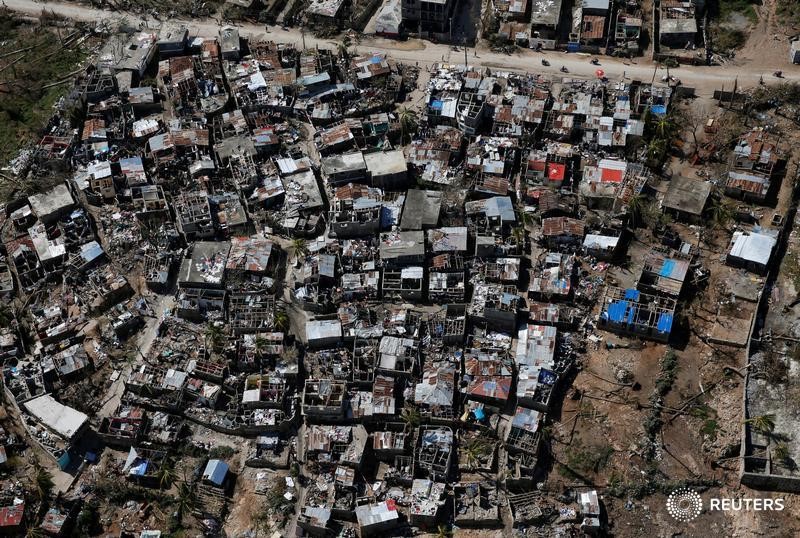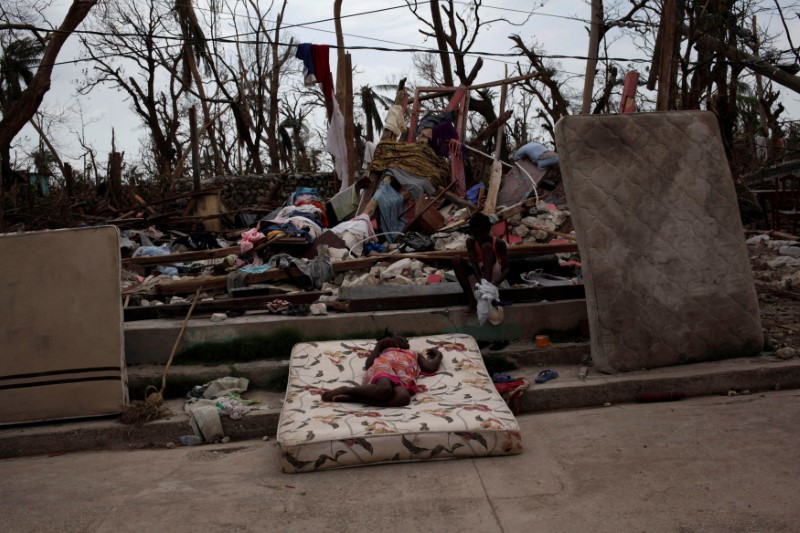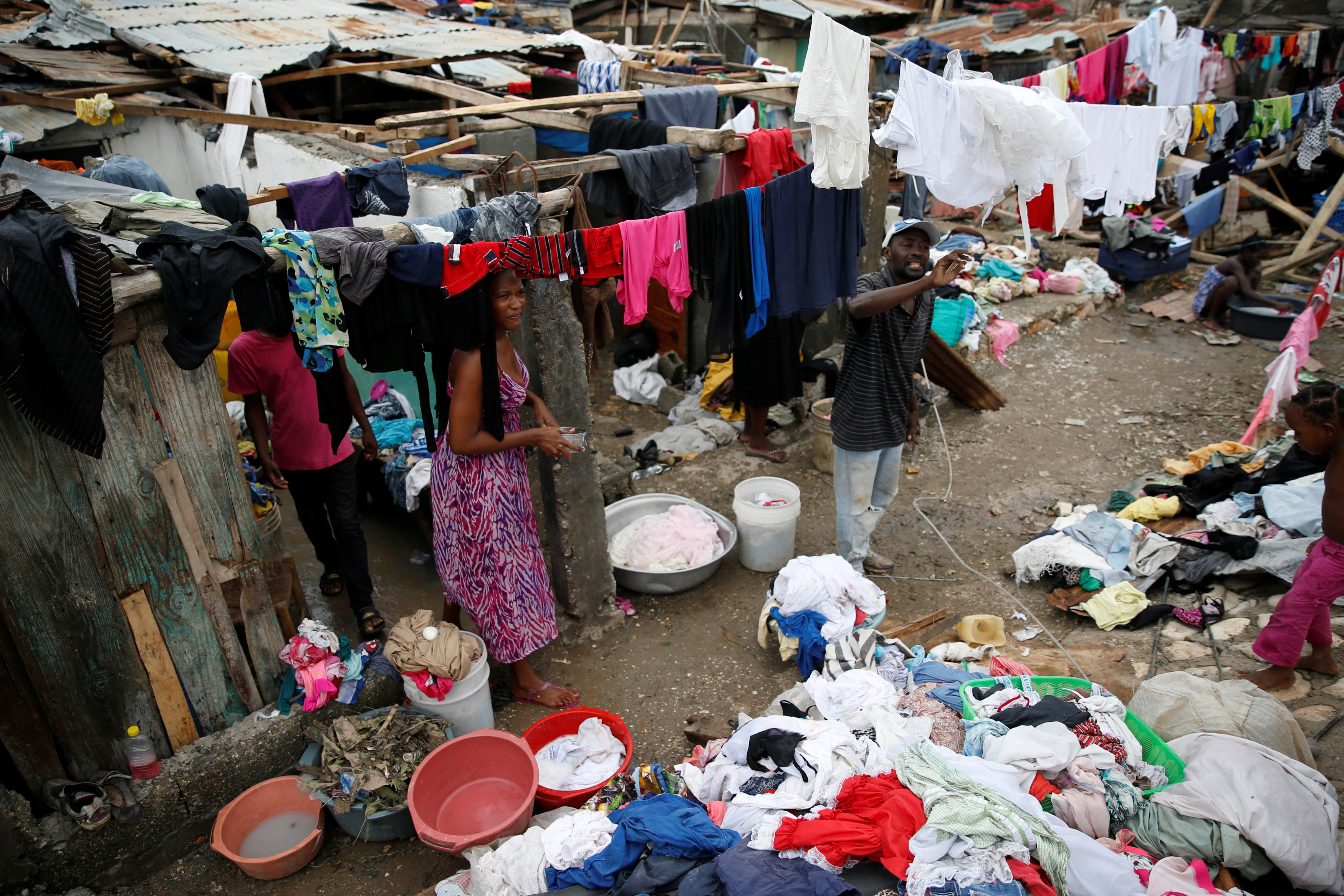
By Kami Klein
Over the past decade, Haitians have suffered more natural calamity than any people in the world. On January 12th, 2010 the Haitian people were devastated by a deadly 7.2 earthquake killing over 220,000, injuring 300,000 and leaving 1.5 million people homeless. Following this tragedy, Haitians were cruelly struck with a cholera epidemic which killed another 3,597 people and sickened over 340,000 people.
With a lot of hard work, farm lands were beginning to produce, banana crops had recovered, livestock was healthy and growing and while there was still a long way to go, the Haitian people kept on with their struggle to survive. Then, on October 4th, 2016, Hurricane Matthew arrived, and Haiti was slammed with 145 mph winds and torrential rains. When it was over, almost a thousand people had lost their lives, 90% of the homes were heavily damaged or destroyed, entire communities gone, 80% of all crops blown away leaving farm lands looking like landfills filled with trash and debris, and leaving 1.4 million people in desperate need of emergency aid.
According to a recent article in Washington Post, Matthew has left 800,000 Haitians in desperate need of food. Along the roads, starving children beg for something to eat. Homeless families sleep under trees. Emergency help is arriving, but there is not enough of it. The United Nations has raised just a third of the $120 million needed to cope with the emergency. Storm-hit areas have reported around 3,500 suspected cholera cases.

A boy drinks water as he receives treatment for cholera at the Immaculate Conception Hospital in Les Cayes, Haiti, November 8, 2016. REUTERS/Andres Martinez Casares
Haiti Country Director Hervil Cherubin, “Loss of crops, livestock, and housing will cause a real disaster in the coming months. People will not have food to eat or the ability to create income as there are no crops to sell. This will create a huge problem in rural Haiti if something is not done to help the agriculture in the next three months.”
The damage in Haiti is monumental, causing unrelenting hunger, no shelter, and no safe drinking water. Those that have gone to Haiti to offer assistance are begging for our help.
Morningside’s amazing friend, Gary Heavin, has been there on the ground and in the air, delivering food and supplies to places so devastated that it is impossible to get there by road! There are no overwhelming offers of support from the world and the media has basically gone silent. Recently, Pastor Jim Skyped with Gary on The Jim Bakker Show and he had this to say on the conditions he has seen with his own eyes:
“Jim, I have been here 12 days now. And, it looks like Hiroshima. I am calling this a hidden holocaust because no one knows about it. There are 1.4 million people that are under tremendous stress right now and almost no help! I am here with three of my aircrafts. We are flying in, food, water, and doctors. In two of the cities, my aircraft was the only evacuation for people that have been injured in this hurricane. We have been flying men, women and children with severe injuries to get medical help. My aircraft is the only source of food for 4,000 people that are stranded on a mountaintop. Jim & Lori, thank you for the food that you sent! That was the first food that 4,000 starving people received. We are the only source of food for these people!”
Gary Heavin is a man who tells it like it is. The desperation of the Haitian people has filled his heart. It is from your generosity that we were able to send with him Food Buckets, Extreme Water Bottles and Flashlights! But it is up to all of us, as God’s people, to do MORE! Deuteronomy 15:11 “For the poor will never cease to be in the land; therefore I command you, saying, ‘You shall freely open your hand to your brother, to your needy and poor in your land.’

Liface Luc, 66, poses for a photograph in his destroyed house after Hurricane Matthew hit Jeremie, Haiti, October 15, 2016. “I don’t need to say nothing, my house explains everything. It’s completely flat. I lost everything; my crops, my animals, so I have nothing left. It’s like my two hands had been cut. What can I say? I’m at death’s door,” said Luc. REUTERS/Carlos Garcia Rawlins
Because we have these connections in Haiti, we know that our food is reaching those that desperately need it! If you would like to help please click here and visit our Help for Haiti page.
We have so many blessings! Please keep the aid workers and people of Haiti in your prayers!





























